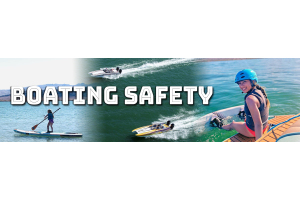Selecting an Airmar transducer to fit your boat, budget, and fishing style
Airmar makes a variety of high-quality transducers to fit boater’s needs. They produce several elements (the heart of a transducer) and then package them in different mounting styles to match the boat.
Mounting styles
Flush mount thru hull: Best on fast planing hulls under 36’ long, requires a hole in the bottom of that boat. Some people shy away at the large hole. In reality when properly installed they never catastrophically fail, and they are far safer for the long term health of a boat than anything attached to a cored transom.


Fairing block thru hull: They hang below the bottom of the boat and are designed for slower, longer vessels. The fairing block on a 1 kw thru hull is very large.

In Hull: They shoot through a fiberglass bottom. The fiberglass is acoustically similar to water, usually a transducer will have it’s range limited 2 or 3% less if it shoots through fiberglass. Make sure the transducer works with your sounder before ordering, some manufacturers don’t support all shoot throughs.


Transom mount: The easiest to install, hangs off the back of the boat on the transom. They can be finicky to get installed perfect, and on some hulls they won’t work at all due to steps, or curved transoms.


Transducer Considerations
Beam Angle: also known as cone angle, this is the amount of bottom marked by the transducer at one time.
Resolution: resolution is affected by three things, transducer sensitivity, beam angle, and frequency. The higher the frequency the more resolution, the narrower the beam angle the more resolution, and the more powerful the transducer the more sensitive it is.
Max Depth: A lower frequency will penetrate deeper. A frequent misconception is that you need to be able to hit the bottom in whatever depth you are fishing at. If you are trolling offshore for pelagic species you should not need to see the bottom. Most pelagics will be in the top 200’ of the water, if not in the top 120’. These are the fish that you are looking for, not targets 1000’ down. You are much better served with transducer that can target the top 200’ with high resolution and a wide cone than a transducer that will mark the bottom in the canyon.
Chirp vs Traditional: Chirp transducers are able to shoot a range of frequencies and have a low “Q” value. This tends to produce a more sensitive transducer. In practice you are more likely to see individual arches instead of blobs, and more likely to see fish close to the bottom instead of blending into the bottom.

Transducers for bottom fishing: A bottom fishing transducer will deliver resolution and a narrow cone a the depths you need it at. For bottom fishing under 600’ a high frequency works well. For bottom fishing past 600’ and under 1200’ a medium frequency works well. Airmar makes 2 narrow cone high frequency elements for most sounders. The 600 watt B75H and 1000 watt B175H. The B175H is a little narrower and a little more powerful than the B75H. Both are only available in flush mount through hulls. Airmar makes a medium frequency narrow cone 1000 watt element, the B175M. It works well at shallower depths, but really shines past 600’ where the high frequencies start to peter off. It is available in a transom mount and is the best chirp transom mount for bottom fishing. The B260 is a traditional transducer with a very sensitive narrow cone 200 khz element and a very sensitive medium 50 khz element. It has been the go-to bottom fish transducer for a long time and still holds its own against most chirp transducers.
Transducers for fishing in the water column: A good water column transducer will have a wide cone to mark fish off to the sides when you are trolling or drifting. It will have enough resolution to help discriminate bait vs game fish, and the size of game fish under the boat. The go-to transducer element for this is the 1 kw High-Wide. It is a high frequency wide cone element. It is very sensitive and works well bottom fishing under 100’ feet even though it was designed to mark fish in the water column. It is available in a transom mount or through hull. If the high-wide is outside your budget or you need to target fish deeper in the water, a good option is the 600 watt B75M. It is a medium frequency, medium cone transducer. You can run it in a fixed low frequency for a wide cone and a fixed high frequency for a narrow cone. It is only available in a thru-hull mount. Visit BOE Marine to choose the best marine transducers online.
Now that you are a transducer expert, you can pick which one will be the most effective for your boat and fishing goals. Our post on how to select the right transducer will give you a few more helpul tips on choosing the number one option for you.








